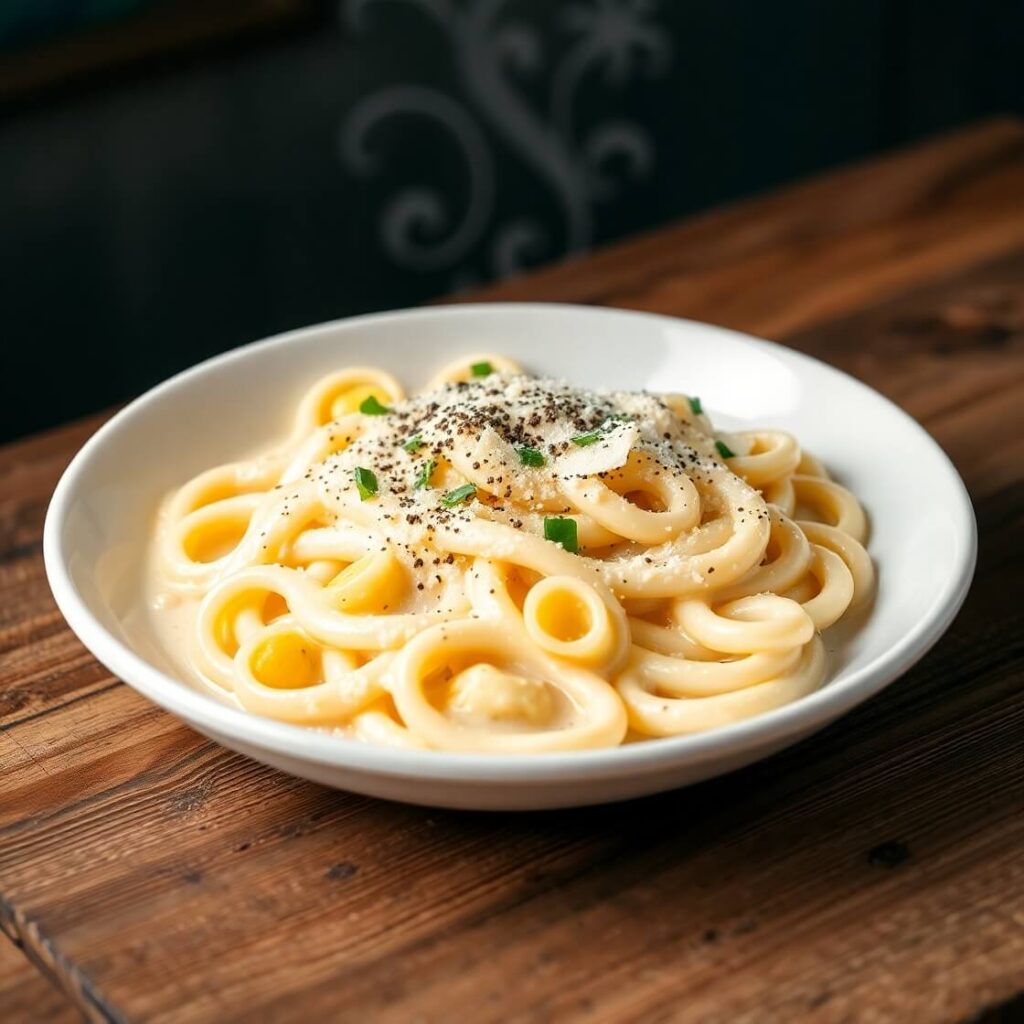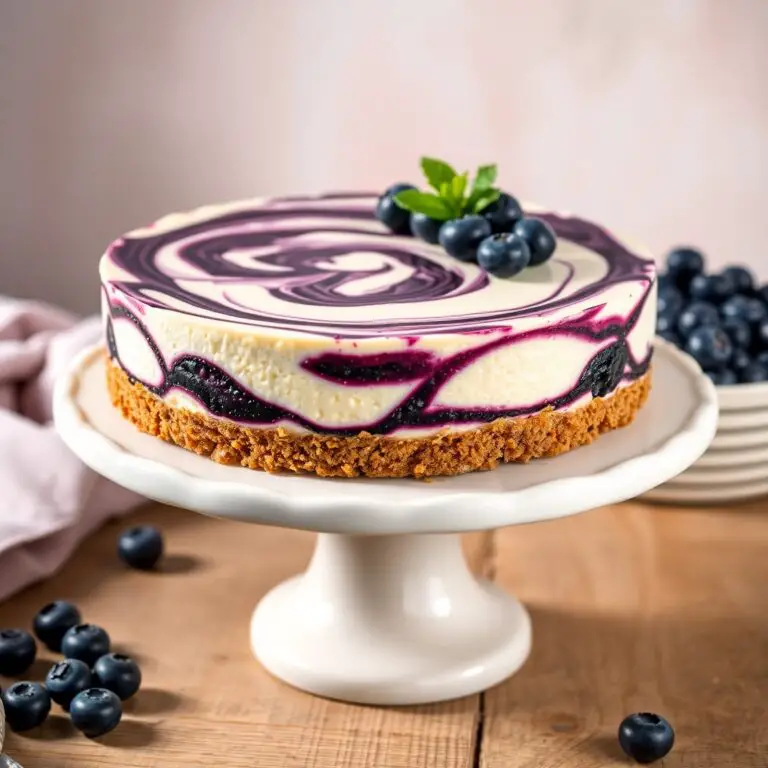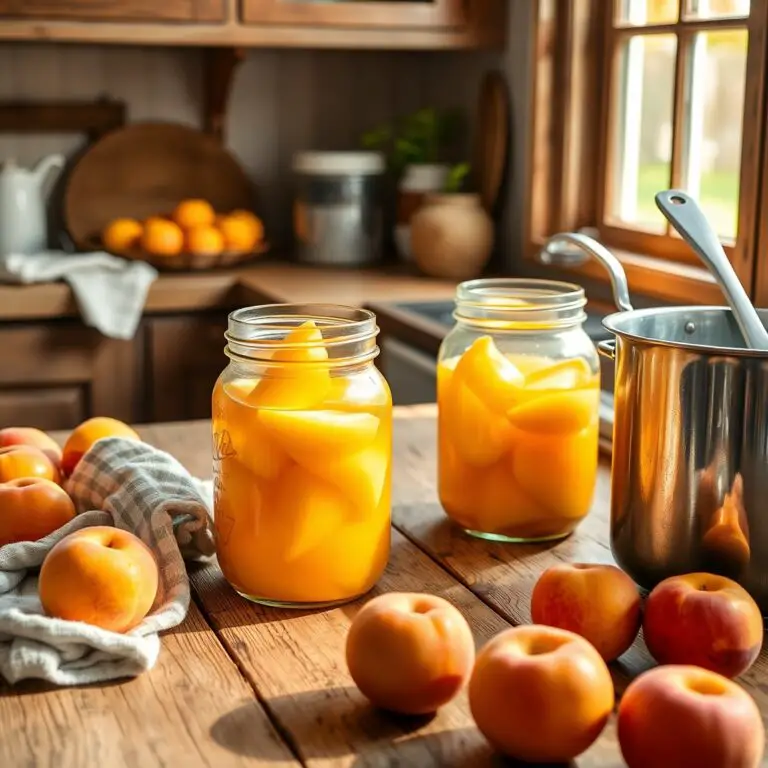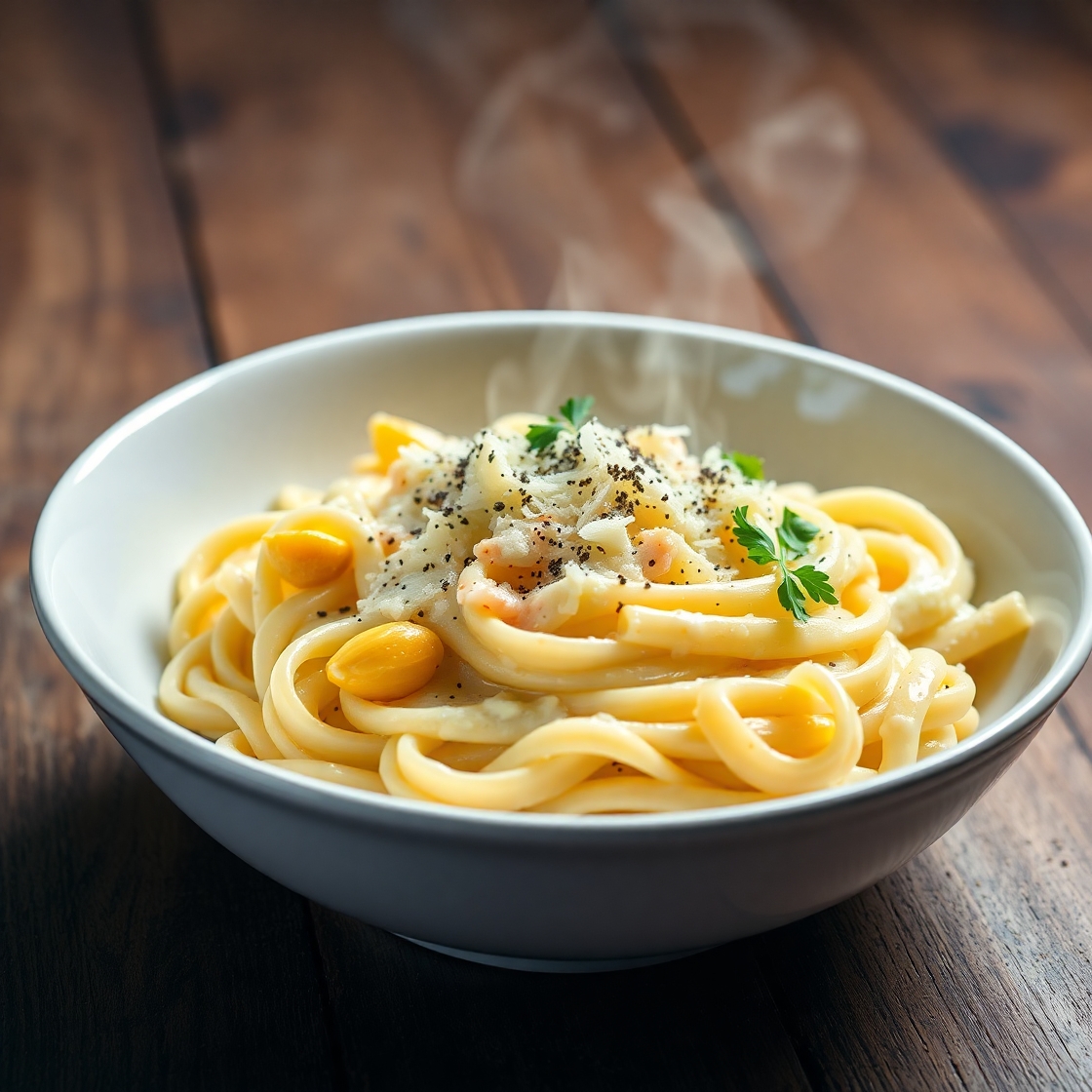
There’s something incredibly comforting about a bowl of Alfredo pasta. Creamy, rich, and indulgently satisfying, it’s the kind of dish that wraps you in warmth on a cool evening or turns an ordinary dinner into something special.
I still remember the first time I made Alfredo pasta from scratch—no jars, no shortcuts—just butter, cream, garlic, and cheese melting into silky perfection. It was a cold Sunday evening, and I wanted to prepare something heartwarming for my family. What started as a spontaneous idea turned into a tradition: Alfredo pasta on cozy weekends.
This recipe was born from that very desire—for a meal that’s easy enough to pull off on a weeknight, but delicious enough to serve to guests. And once you make it from scratch, you’ll never look at the store-bought version the same way again. Keep reading, because I’ll walk you through everything you need to know to make the creamiest, most flavorful Alfredo pasta at home.
Why I Love This Recipe
Here’s the truth—there are many pasta recipes out there, but Alfredo is in a league of its own. Why? It’s the ultimate comfort food. Smooth, garlicky, and cheesy without being complicated.
One of the biggest reasons people fall in love with this dish is its simplicity. You only need a handful of ingredients, but the result tastes like something from a high-end Italian restaurant. There’s no long list of herbs, spices, or slow simmering sauces—just pure, creamy decadence.
The real beauty lies in how adaptable it is. Add grilled chicken, shrimp, or roasted veggies and it becomes a complete meal. Or serve it as-is for a classic and satisfying experience. It’s also kid-friendly, freezer-friendly, and perfect for meal prep.
Whether you’re cooking for a crowd, preparing date night at home, or simply craving a rich, buttery pasta dish—Alfredo pasta delivers every single time.
Ingredients for Alfredo Pasta
You don’t need a long shopping list for this recipe—just a few high-quality ingredients that come together in a luxurious way.
But here’s the thing: since we’re using so few ingredients, the quality really matters. Use real butter, fresh garlic, and a good block of Parmesan cheese. It makes all the difference.
Here’s what you’ll need:
For the Pasta:
- Fettuccine (classic choice, but penne or linguine works too)
- Salt (for boiling water)
- Olive oil (optional, to prevent sticking)
For the Alfredo Sauce:
- Unsalted butter – rich, creamy base
- Heavy cream – gives the sauce its iconic silky texture
- Fresh garlic – for depth and aroma
- Freshly grated Parmesan cheese – avoid the pre-shredded kind if you want it to melt smoothly
- Salt – to balance the richness
- Freshly cracked black pepper – for a little bite
- Optional: Nutmeg – just a pinch, for warmth
Optional add-ins include cooked chicken breast, sautéed shrimp, steamed broccoli, or peas. But at its core, this is a dish that shines with its simplicity.
How Much Time Will You Need
This is one of those recipes that comes together surprisingly fast, especially considering how impressive the final dish is.
Here’s a quick time breakdown:
- Prep Time: 10 minutes
- Cooking Time: 20 minutes
- Total Time: About 30 minutes
If you’re adding chicken or shrimp, that might add another 10-15 minutes to the process. But for the base recipe, you’re looking at a delicious, creamy pasta ready to serve in half an hour or less.
How to Make This Alfredo Pasta
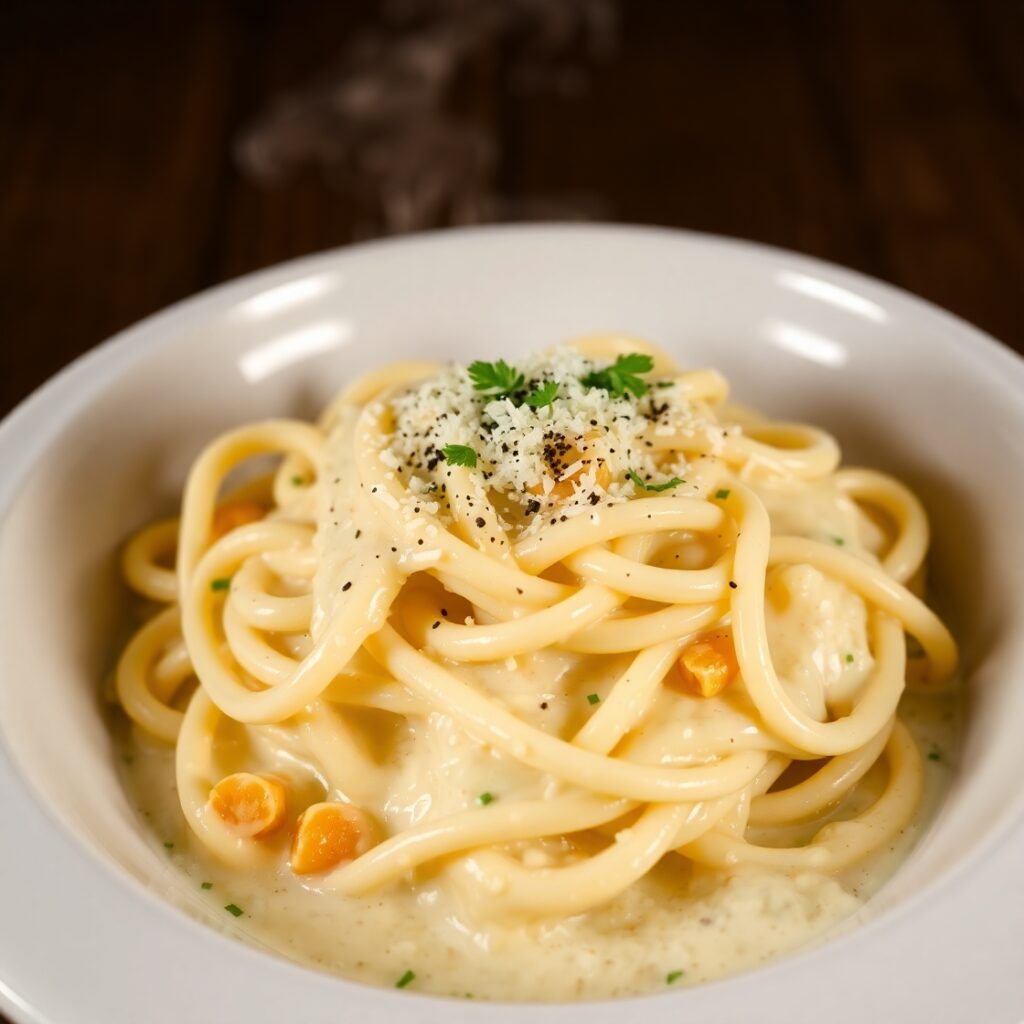
Let’s walk through the steps to making this rich and creamy Alfredo pasta from scratch. No shortcuts, just a foolproof guide to deliciousness.
Step – 1: Boil the Pasta
Bring a large pot of salted water to a boil. Add your pasta and cook it according to the package directions until al dente. Reserve about 1 cup of the pasta water before draining, in case you need to loosen the sauce later.
Step – 2: Melt the Butter and Sauté the Garlic
In a large, deep skillet or saucepan, melt the butter over medium heat. Add the minced garlic and sauté for about 1–2 minutes until fragrant. Keep the heat low enough so the garlic doesn’t brown—this should be gentle.
Step – 3: Add the Cream
Slowly pour in the heavy cream, stirring constantly to combine it with the butter. Let the mixture simmer (not boil) for about 5–6 minutes so the flavors begin to marry and the cream thickens slightly.
Step – 4: Stir in the Parmesan
Reduce the heat to low and slowly stir in the freshly grated Parmesan cheese. Do this gradually, allowing each handful to melt before adding more. Stir constantly to keep the sauce smooth. Add a pinch of salt and black pepper to taste.
Step – 5: Toss the Pasta
Add the drained pasta directly into the sauce. Use tongs to toss the noodles and coat them evenly in the Alfredo. If the sauce feels too thick, add a splash or two of the reserved pasta water until you reach your desired consistency.
Step – 6: Let It Rest
Turn off the heat and let the pasta sit for 1–2 minutes before serving. This gives the sauce a chance to cling to the noodles and thicken up just a bit more.
Optional: Top with extra Parmesan, chopped parsley, or a drizzle of olive oil for extra flavor and a beautiful finish.
Substitutions
There’s something about the original ingredients that just works, but you can absolutely tweak this recipe depending on what you have on hand or your dietary needs.
Butter Substitute:
Instead of butter, try olive oil for a lighter version. Ghee is also a great choice for a nutty depth of flavor.
Cream Substitute:
If you want to cut back on the fat, you can use half-and-half instead of heavy cream. Full-fat milk works too, though the sauce won’t be quite as thick. A plant-based cream (like cashew or coconut cream) can work for dairy-free versions.
Cheese Substitute:
Pecorino Romano is a great alternative to Parmesan—it’s sharper and saltier. For a dairy-free option, try nutritional yeast or a vegan Parmesan alternative.
Pasta Options:
Gluten-free pasta, zucchini noodles, or spaghetti squash can all be used instead of regular fettuccine if you’re avoiding gluten or carbs.
Best Side Dishes for Alfredo Pasta
To turn Alfredo pasta into a well-rounded meal, pair it with one or two of these side dishes. They bring balance and freshness to the rich, creamy pasta.
Garlic Bread
Crunchy on the outside, soft on the inside—garlic bread is a must. It’s perfect for scooping up every last bit of sauce.
Caesar Salad
The crisp romaine, tangy dressing, and Parmesan shavings complement the creamy pasta beautifully.
Roasted Vegetables
A tray of oven-roasted broccoli, zucchini, or asparagus adds some much-needed color and fiber to your plate.
Serving and Presentation Tips
Presentation can elevate your Alfredo pasta from a simple dinner to a restaurant-style experience at home. Here’s how to make it look as good as it tastes.
Use a Wide, Shallow Bowl
Pasta looks best when it’s slightly piled rather than packed into a deep dish. A wide bowl allows the creamy sauce to spread and coat the pasta attractively.
Garnish Thoughtfully
A final sprinkle of freshly grated Parmesan cheese, a few turns of cracked black pepper, and a touch of chopped parsley or basil on top add color contrast and a fresh aroma. If you want to go a step further, a drizzle of truffle oil or a curl of Parmesan can add flair.
Serve Immediately
Alfredo sauce thickens as it cools. To maintain its silky texture, serve it right after tossing. If it sits too long, add a splash of warm cream or reserved pasta water to loosen it up before plating.
Tips and Tricks to Make This Recipe Even Better
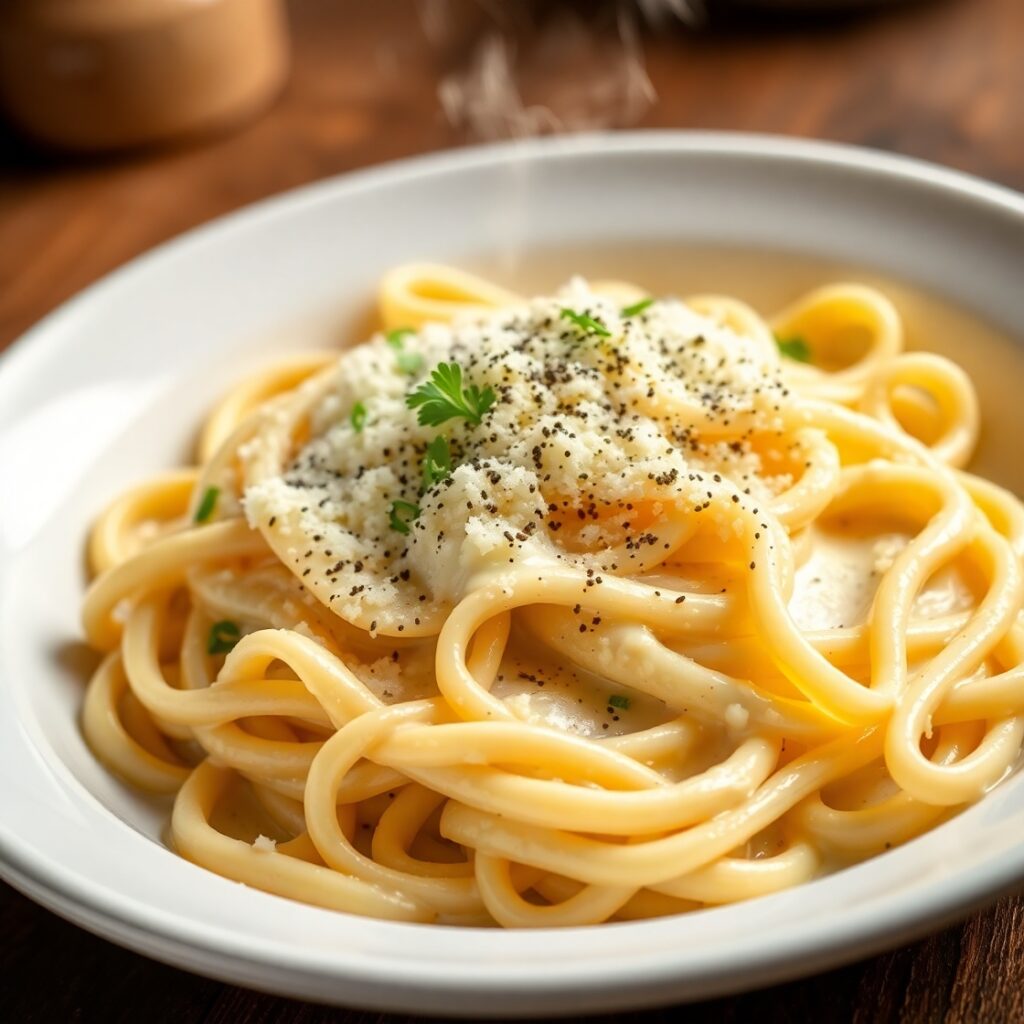
Here’s how to take your Alfredo pasta from great to unforgettable.
Use Freshly Grated Cheese Only
Pre-grated Parmesan contains anti-caking agents that prevent it from melting smoothly. Always grate it fresh for a velvety sauce.
Simmer, Don’t Boil
The cream should gently simmer—not boil—when making the sauce. Boiling can cause it to separate or become too thick too fast.
Save Your Pasta Water
A splash of starchy pasta water can help emulsify and loosen the sauce if it gets too thick. It also helps bind the sauce to the noodles better.
Toss with the Sauce, Don’t Pour Over It
Mix the pasta directly in the pan with the sauce. This coats each strand evenly and allows the pasta to absorb more flavor.
Use Room Temperature Ingredients
Cold butter or cream can cause the sauce to seize or separate. Let your ingredients come to room temp before cooking.
Common Mistakes to Avoid
Even simple recipes can go wrong without a few precautions. Watch out for these common Alfredo pasta pitfalls.
Using Pre-shredded Cheese
As tempting as it is for convenience, pre-shredded cheese often leads to a gritty or clumpy sauce.
Overcooking the Garlic
Garlic should be gently sautéed. If it turns brown, it becomes bitter and ruins the delicate flavor of the sauce.
Boiling the Cream
Boiling heavy cream can cause it to separate. Always maintain a gentle simmer to preserve its texture.
Adding Cheese Too Quickly
Dumping all the Parmesan in at once can lead to clumps. Add it gradually, stirring continuously for a smooth finish.
Skipping Salt in the Pasta Water
The pasta water is your first layer of seasoning. It should be salty like the sea. Otherwise, your whole dish might taste flat.
How to Store It
While Alfredo pasta is best eaten fresh, you can store leftovers and enjoy them later with just a little extra care.
Refrigeration
Place leftover pasta in an airtight container and refrigerate for up to 3–4 days. It’s best to store the sauce and pasta separately if possible.
Reheating
Reheat gently over low heat in a saucepan, adding a splash of milk or cream to revive the sauce. Avoid using high heat or the microwave, which can cause the sauce to break.
Freezing
Alfredo sauce can be frozen, but it may separate slightly when thawed. For best results, freeze only the sauce (without the pasta) in an airtight container for up to 1 month. Thaw overnight in the fridge and reheat slowly, whisking to bring it back together.
FAQ
Can I use milk instead of heavy cream in Alfredo sauce?
Yes, but it won’t be as rich. For better texture, use half-and-half or add a little cream cheese to thicken it.
Why did my Alfredo sauce turn grainy?
This usually happens if the Parmesan cheese was added too quickly or wasn’t freshly grated. Add cheese slowly, off the heat, and stir continuously.
Can I make Alfredo sauce ahead of time?
You can! Make the sauce, cool it, and refrigerate for up to 3 days. Reheat slowly on the stove with a splash of milk or cream.
What pasta shape is best for Alfredo sauce?
Fettuccine is traditional, but penne, linguine, or even tortellini work well. Just choose a pasta that can hold the creamy sauce.
Can I make this recipe gluten-free?
Absolutely. Just use gluten-free pasta and make sure your cheese and other ingredients are certified gluten-free.
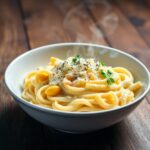
Alfredo Pasta Recipe
- Total Time: 30 minutes
- Yield: 4 1x
- Diet: Vegetarian
Description
This rich, creamy Alfredo pasta recipe is the ultimate comfort food. Made with butter, garlic, heavy cream, and freshly grated Parmesan, this dish comes together in just 30 minutes and tastes like a five-star meal. Whether you’re serving it plain or adding protein like grilled chicken or shrimp, this homemade Alfredo will win over your taste buds every time. A perfect weeknight dinner or elegant dish for guests, it’s simple, satisfying, and absolutely delicious.
Ingredients
- 12 oz fettuccine pasta
- 4 tbsp unsalted butter
- 1½ cups heavy cream
- 3 cloves garlic, minced
- 1½ cups freshly grated Parmesan cheese
- Salt, to taste
- Freshly cracked black pepper, to taste
- Optional: pinch of ground nutmeg
Instructions
- Boil pasta in salted water until al dente. Reserve 1 cup of pasta water and drain.
- In a large skillet, melt butter over medium heat. Add garlic and sauté for 1–2 minutes.
- Pour in heavy cream and bring to a gentle simmer for 5–6 minutes.
- Reduce heat to low, then stir in Parmesan cheese a little at a time, stirring constantly.
- Add cooked pasta to the sauce and toss to coat. Add pasta water if needed to loosen sauce.
- Season with salt and pepper. Let rest for 1–2 minutes before serving.
- Garnish with extra Parmesan, cracked pepper, and chopped parsley if desired.
Notes
- For richer flavor, use Parmigiano-Reggiano.
- Add grilled chicken, shrimp, or veggies for variation.
- Always grate cheese fresh for the best sauce texture.
- Prep Time: 10 minutes
- Cook Time: 20 minutes
- Category: Dinner
- Method: Stovetop
- Cuisine: Italian-American
Nutrition
- Serving Size: 4
- Calories: 640
- Sugar: 1g
- Sodium: 420mg
- Fat: 41g
- Saturated Fat: 26g
- Unsaturated Fat: 13g
- Trans Fat: 0g
- Carbohydrates: 49g
- Fiber: 2g
- Protein: 18g
- Cholesterol: 135mg

